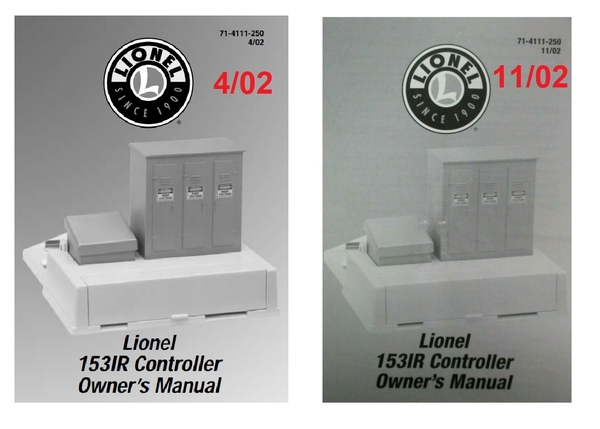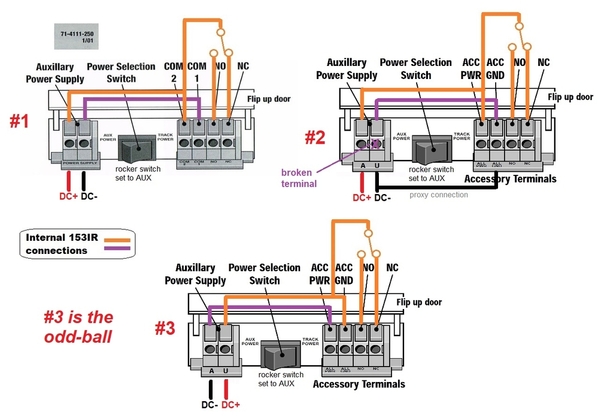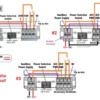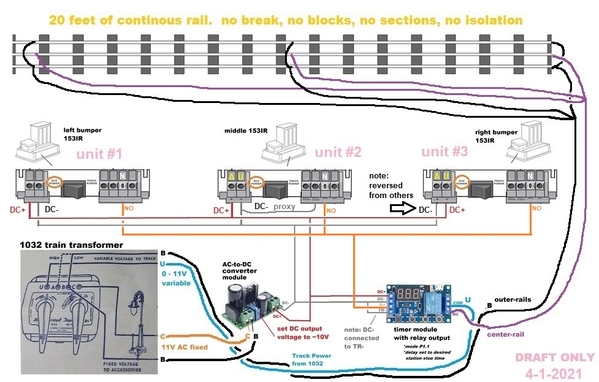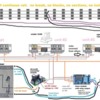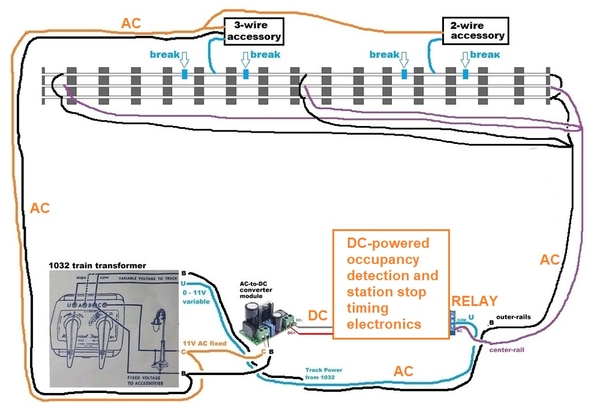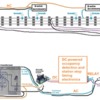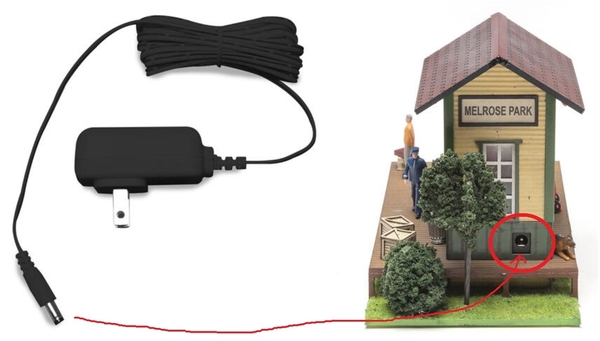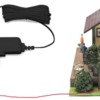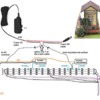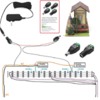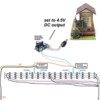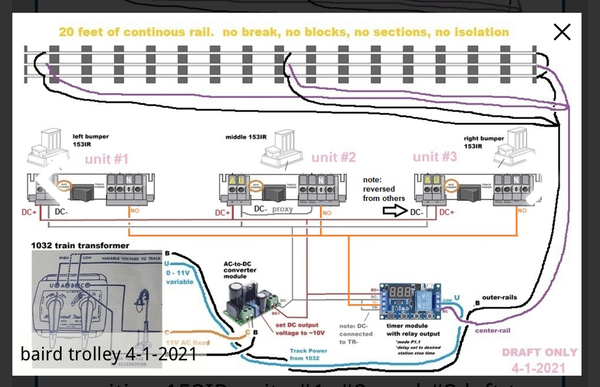As for the Menards building:
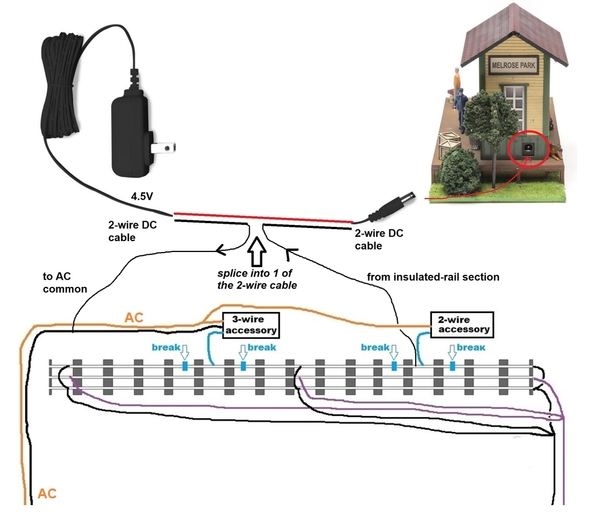
Only the accessory portion of the wiring is shown above to reduce diagram clutter.
The method shown above is arguably the simplest from a technical standpoint but seems to confuse folks to the point where they don't believe it can work so they don't try it! It's another one of those ignore-the-man-behind-the-curtain scenarios.
Step 1. I don't have a close-up of the Menards 4.5V DC-output power adapter but presumably you can easily splice into one of the two wires. It actually doesn't matter which of the 2 wires you splice and I just happen to use "black" and "red" more to suggest this is DC; in all likelihood the cable will have stripes on one wire, or be "ribbed" on one wire, or whatever. Again, it does NOT matter which one you splice into. More on this later.
Step 2. Connect the transformer side of the splice to AC common. Connect the plug side of the splice to the insulated rail section.
That's it. Now when the trolley sits on the insulated rail section, the Menards building will turn on with 4.5V DC power from the wall-wart. As shown in the above diagram, I purposely left a placeholder called "2-wire Accessory" on the same insulated rail section. This is to show that you can still connect other conventionally powered accessories! So for example the DC-powered Menards building could turn on as well as your RailKing building.
----
A minor variant to above is to use a pair of screw-terminal wiring adapters (about 50 cents each in small quantity).
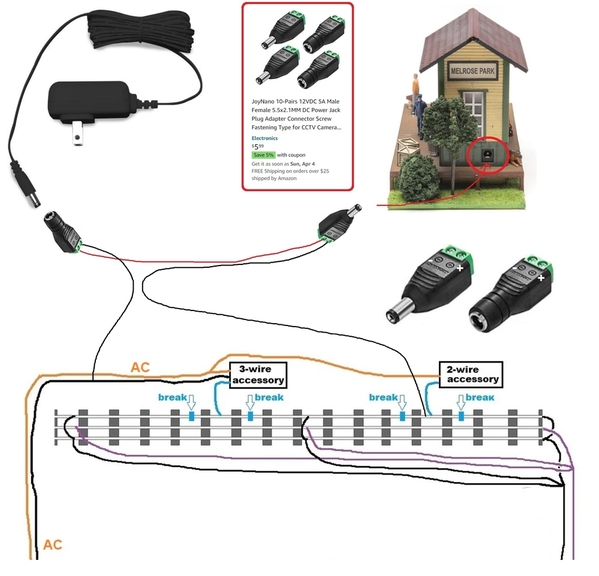
The electrical functionality is the same as splicing the cable...but as the adapters are coded "+" and "-" it could be some level of comfort to choose the "-" wire to tie together with the Accessory/Track AC common. Again, it doesn't matter which of the 4.5V DC wires goes straight-thru to the Menards building. I figure it is unlikely that the length of cable on the Menards transformer is long enough to reach your station anyway. In other words, the screw-terminal adapters provides a way to make an "extension cord" of arbitrary length.
-----
Another completely different tack is to convert the Menards building to Accessory AC voltage operation.
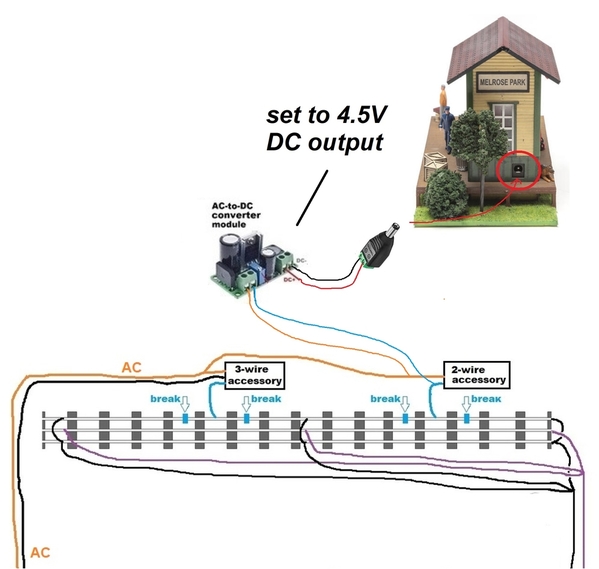
If you bought more than one of those AC-to-DC converter modules, you could use one set to 4.5V DC output. Then you have what amounts to a traditional AC Accessory powered building and you would hook it up to the insulated rail section just like a 2-wire accessory. I'd think this could simplify wiring as a single train transformer powers all-things-trolley.




